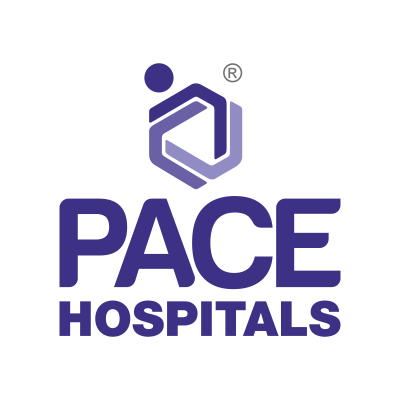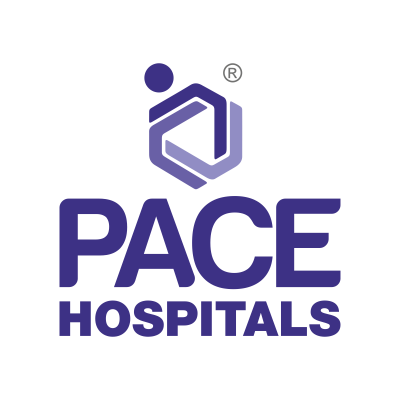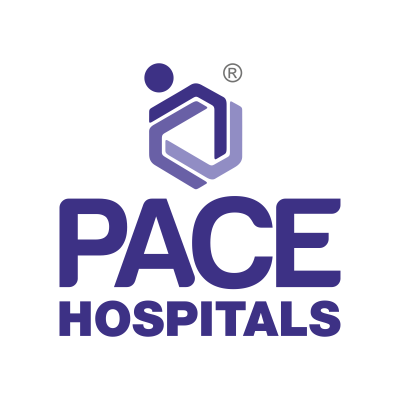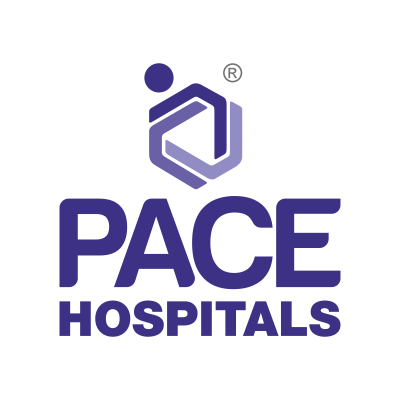From Diagnosis to Recovery: Radiculopathy Treatment at PACE Hospitals, Hyderabad, India
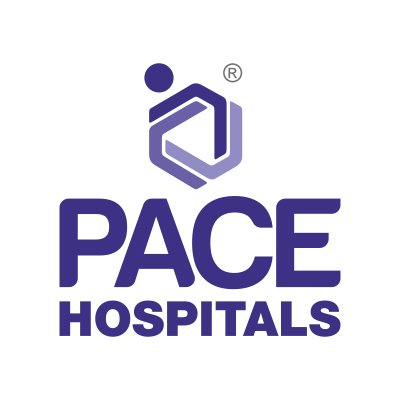
Strong 8k brings an ultra-HD IPTV experience to your living room and your pocket.
PACE Hospitals is regarded as a leading hospital for radiculopathy treatment in Hyderabad, Telangana, India. Our expert team of neurologists, neurosurgeons, Orthopaedic specialists, and physiotherapists offers a multidisciplinary approach to diagnose and manage radiculopathy—a condition caused by compression or inflammation of spinal nerve roots, often leading to pain, tingling, numbness, or weakness.
As the Best Hospital for Neurosurgery in Hyderabad, Telangana, India, we utilize state-of-the-art diagnostic tools, including MRI, CT scans, nerve conduction studies, and electromyography (EMG), to accurately pinpoint the affected nerves and determine the underlying causes, such as herniated discs, spinal stenosis, or degenerative spine diseases. This precise diagnosis allows us to tailor treatment plans to each patient’s unique needs.
Radiculopathy is a medical condition that affects millions of people worldwide, yet it remains misunderstood by many. Characterized by pain, numbness, tingling, or weakness radiating from the spine into the limbs, radiculopathy can significantly impact a person’s quality of life. Whether you are a patient, caregiver, or simply someone interested in spinal health, understanding radiculopathy is crucial for early recognition and effective management.
What is Radiculopathy?
Radiculopathy refers to a set of symptoms that occur when a nerve root in the spinal column is compressed, irritated, or inflamed. The spinal column is made up of vertebrae, intervertebral discs, ligaments, and nerves. Nerve roots branch off from the spinal cord and exit the spine through small openings called foramina. When these nerve roots are pinched or damaged, they can cause pain and other symptoms along the path of the affected nerve.
Radiculopathy is often classified based on the region of the spine involved:
Cervical Radiculopathy: Affects the neck region, with symptoms radiating into the shoulders, arms, and hands.
Thoracic Radiculopathy: Affects the upper and mid-back, with symptoms radiating around the chest or abdomen.
Lumbar Radiculopathy: Affects the lower back, with symptoms radiating into the hips, buttocks, legs, and feet.
Each type of radiculopathy presents unique challenges and requires tailored treatment approaches.
Anatomy of the Spine and Nerve Roots
To understand radiculopathy, it’s helpful to have a basic understanding of spinal anatomy. The human spine is divided into three main regions:
Cervical Spine (Neck): Consists of seven vertebrae (C1-C7).
Thoracic Spine (Upper and Mid-Back): Consists of twelve vertebrae (T1-T12).
Lumbar Spine (Lower Back): Consists of five vertebrae (L1-L5).
Between each vertebra are intervertebral discs, which act as shock absorbers and allow flexibility. Nerve roots exit the spinal cord at each level and travel to various parts of the body. When these nerve roots are compressed or irritated, radiculopathy can occur.
Causes of Radiculopathy
Radiculopathy can result from a variety of conditions that put pressure on or damage the nerve roots. The most common causes include:
1. Herniated or Bulging Discs
Intervertebral discs can herniate or bulge due to injury, aging, or degeneration. When the inner gel-like material of the disc protrudes through the outer layer, it can press against nearby nerve roots, causing pain and other symptoms.
2. Degenerative Disc Disease
As we age, the discs between our vertebrae lose water content and become less flexible. This degeneration can lead to disc collapse, bone spurs, and narrowing of the spaces where nerves exit the spine (foraminal stenosis).
3. Spinal Stenosis
Spinal stenosis refers to the narrowing of the spinal canal or foramina, which can compress nerve roots. This condition is often caused by age-related changes, such as thickening of ligaments, bone spurs, or disc degeneration.
4. Bone Spurs (Osteophytes)
Bone spurs are bony growths that develop along the edges of bones, often as a result of osteoarthritis. These spurs can encroach on nerve roots and cause radiculopathy.
5. Spondylolisthesis
This condition occurs when one vertebra slips forward over the one below it, potentially compressing nerve roots.
6. Trauma or Injury
Accidents, falls, or sports injuries can cause fractures, dislocations, or swelling that compress nerve roots.
7. Tumors or Infections
Although rare, tumors or infections in the spine can also lead to nerve root compression and radiculopathy.
8. Other Causes
Other less common causes include congenital abnormalities, cysts, or inflammatory conditions such as rheumatoid arthritis.
Risk Factors for Radiculopathy
Certain factors can increase the risk of developing radiculopathy:
Age: Degenerative changes in the spine are more common with advancing age.
Occupational Hazards: Jobs that involve repetitive lifting, bending, or twisting can strain the spine.
Obesity: Excess body weight puts additional stress on the spine.
Smoking: Smoking accelerates disc degeneration and impairs healing.
Genetics: A family history of spinal problems can increase susceptibility.
Sedentary Lifestyle: Lack of physical activity weakens the muscles that support the spine.
Symptoms of Radiculopathy
The symptoms of radiculopathy vary depending on the location and severity of nerve root compression. Common symptoms include:
1. Pain
Cervical Radiculopathy: Pain radiates from the neck into the shoulder, arm, and hand. It may be sharp, burning, or aching.
Thoracic Radiculopathy: Pain wraps around the chest or abdomen, often described as a band-like sensation.
Lumbar Radiculopathy: Pain radiates from the lower back into the buttocks, legs, and feet. Sciatica is a common form of lumbar radiculopathy.
2. Numbness and Tingling
Patients may experience numbness, tingling, or a “pins and needles” sensation in the affected limb.
3. Muscle Weakness
Weakness in the muscles served by the affected nerve root can occur, making it difficult to perform certain movements.
4. Loss of Reflexes
Reflexes in the affected limb may be diminished or absent.
5. Sensory Changes
Some patients report changes in sensation, such as hypersensitivity or reduced feeling in certain areas.
6. Gait Disturbances
In severe cases, radiculopathy can affect balance and walking.
7. Bowel or Bladder Dysfunction
Rarely, severe nerve compression can lead to loss of control over bowel or bladder function. This is a medical emergency and requires immediate attention.
When to Seek Medical Attention
While mild cases of radiculopathy may resolve with rest and conservative care, certain symptoms warrant prompt medical evaluation:
Severe or worsening pain
Progressive muscle weakness
Loss of sensation
Difficulty walking or maintaining balance
Loss of bladder or bowel control
Early diagnosis and treatment are essential to prevent permanent nerve damage.
Diagnosis of Radiculopathy
Diagnosing radiculopathy involves a combination of medical history, physical examination, and diagnostic tests.
1. Medical History
The doctor will ask about the onset, duration, and nature of your symptoms, as well as any previous injuries, medical conditions, or family history of spinal problems.
2. Physical Examination
A thorough physical exam will assess:
Range of motion in the spine
Muscle strength and tone
Reflexes
Sensation in the limbs
Gait and balance
Specific maneuvers, such as the Spurling’s test (for cervical radiculopathy) or straight leg raise test (for lumbar radiculopathy), may be performed to reproduce symptoms and localize the affected nerve root.
3. Imaging Studies
Imaging is often necessary to confirm the diagnosis and identify the underlying cause.
X-rays: Can reveal bone spurs, fractures, or alignment issues.
Magnetic Resonance Imaging (MRI): Provides detailed images of soft tissues, including discs, nerves, and ligaments.
Computed Tomography (CT) Scan: Offers cross-sectional images of the spine and is useful for detecting bone abnormalities.
CT Myelography: Involves injecting contrast dye into the spinal canal to enhance imaging of nerve roots.
4. Electrophysiological Studies
Electromyography (EMG): Measures electrical activity in muscles to detect nerve damage.
Nerve Conduction Studies (NCS): Assess the speed and strength of electrical signals in nerves.
These tests help differentiate radiculopathy from other conditions, such as peripheral neuropathy or muscle disorders.
Treatment Options for Radiculopathy
The treatment of radiculopathy depends on the severity of symptoms, the underlying cause, and the patient’s overall health. Most cases can be managed with conservative (non-surgical) measures, but some may require interventional or surgical treatment.
1. Conservative (Non-Surgical) Treatments
a. Medications
Nonsteroidal Anti-Inflammatory Drugs (NSAIDs): Reduce pain and inflammation (e.g., ibuprofen, naproxen).
Analgesics: Over-the-counter or prescription pain relievers.
Muscle Relaxants: Help relieve muscle spasms.
Oral Steroids: Short courses may reduce inflammation.
Neuropathic Pain Medications: Drugs like gabapentin or pregabalin can help with nerve pain.
b. Physical Therapy
Physical therapy is a cornerstone of radiculopathy treatment. A trained therapist will design a personalized program to:
Strengthening the muscles supporting the spine
Improve flexibility and range of motion
Correct posture and body mechanics
Teach safe lifting and movement techniques
Therapies may include stretching, strengthening exercises, manual therapy, and modalities such as heat, ice, or electrical stimulation.
c. Activity Modification
Patients are advised to avoid activities that worsen symptoms, such as heavy lifting, prolonged sitting, or repetitive bending. Gradual return to normal activities is encouraged as symptoms improve.
d. Lifestyle Modifications
Weight Management: Maintaining a healthy weight reduces stress on the spine.
Smoking Cessation: Quitting smoking improves blood flow and healing.
Ergonomic Adjustments: Using supportive chairs, proper lifting techniques, and adjusting workstations can prevent recurrence.
e. Alternative Therapies
Some patients find relief with complementary therapies, such as:
Acupuncture
Chiropractic care
Massage therapy
Yoga or Pilates
While evidence varies, these therapies may be beneficial when used alongside conventional treatments.
2. Interventional Treatments
If conservative measures fail to provide relief, interventional procedures may be considered.
a. Epidural Steroid Injections
Steroid medications are injected into the epidural space around the affected nerve root to reduce inflammation and pain. These injections can provide temporary relief and allow patients to participate more effectively in physical therapy.
b. Nerve Blocks
Local anesthetics and steroids are injected near the affected nerve to block pain signals.
c. Radiofrequency Ablation
A minimally invasive procedure that uses heat to disrupt nerve function and reduce pain.
3. Surgical Treatments
Surgery is reserved for patients with severe or progressive symptoms, significant neurological deficits, or those who do not respond to conservative and interventional treatments.
a. Indications for Surgery
Persistent pain despite conservative treatment
Progressive muscle weakness or loss of function
Loss of bladder or bowel control (cauda equina syndrome)
Structural abnormalities requiring correction
b. Common Surgical Procedures
Discectomy: Removal of the herniated portion of a disc to relieve nerve compression.
Laminectomy: Removal of part of the vertebral bone (lamina) to enlarge the spinal canal and relieve pressure.
Foraminotomy: Widening of the foramina to allow more space for nerve roots.
Spinal Fusion: Joining two or more vertebrae to stabilize the spine.
c. Minimally Invasive Techniques
Advances in surgical technology have led to minimally invasive procedures that use smaller incisions, reduce tissue damage, and promote faster recovery.
d. Risks and Recovery
As with any surgery, there are risks, including infection, bleeding, nerve injury, or failure to relieve symptoms. Recovery time varies depending on the procedure and individual factors, but most patients experience significant improvement in pain and function.
Rehabilitation and Recovery
Rehabilitation is a critical component of recovery from radiculopathy, whether treated conservatively or surgically. A multidisciplinary team, including physicians, physical therapists, and occupational therapists, works together to:
Restore strength and flexibility
Improve posture and body mechanics
Preventing recurrence of symptoms
Facilitate return to work and daily activities
Adherence to rehabilitation programs and lifestyle modifications is essential for long-term success.
Prevention of Radiculopathy
While not all cases of radiculopathy can be prevented, certain strategies can reduce the risk:
Maintain a Healthy Weight: Reduces stress on the spine.
Exercise Regularly: Strengthens core muscles and improves flexibility.
Practice Good Posture: Supports spinal alignment.
Use Proper Lifting Techniques: Bend at the knees, not the waist, and avoid twisting.
Take Breaks from Prolonged Sitting: Stand, stretch, and move regularly.
Quit Smoking: Improves spinal health and healing.
Manage Chronic Conditions: Control diabetes, arthritis, and other health issues that can affect the spine.
Why Choose PACE Hospitals for Radiculopathy Treatment
✅ Multidisciplinary Experts: Care provided by a team of neurologists, neurosurgeons, orthopedic surgeons, and physical therapists
✅ Comprehensive Diagnostics: In-house MRI, CT, X-ray, EMG, and nerve conduction studies for accurate diagnosis
✅ Stepwise Treatment Approach: Begins with conservative care—NSAIDs, muscle relaxants, lifestyle changes, and physiotherapy—progressing only if needed
✅ Targeted Injections: Epidural and selective nerve-root steroid injections offered for moderate to severe symptoms
✅ Minimally Invasive Surgery: Advanced procedures like microdiscectomy, laminectomy, or foraminotomy used when necessary
✅ Proven Outcomes: High success rates in pain relief and functional recovery after treatment
✅ Convenient Access: Full diagnostic and treatment services available under one roof in Hyderabad
👉 Meet our Neurosurgeon Doctor in Hyderabad, India
Dr. U L Sandeep Varma - Consultant Brain and Spine Surgeon with over 10+ years’ experience
At PACE Hospitals—best hospitals in Hitech city, Hyderabad, Telangana, India—we specialize in diagnosing and treating radiculopathy with a comprehensive, patient-centered approach. Our expert team offers everything from advanced diagnostics and personalized medical therapy to minimally invasive spine surgery and long-term nerve health management.
🔶 Don’t delay treatment. Early intervention means a lower risk of complications and a faster return to your daily activities.
👉 Book an Appointment with top doctors in Hyderabad, Telangana, India
Note: IndiBlogHub features both user-submitted and editorial content. We do not verify third-party contributions. Read our Disclaimer and Privacy Policyfor details.



